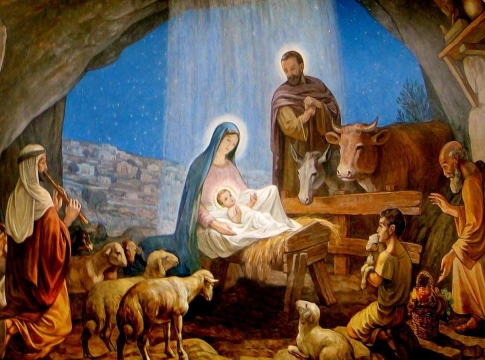
When Jesus originally came, He had restrictions—limitations that He set for himself. Paul makes this quite plain in Philippians 2:5-8.
Christ Jesus, who is God by nature, made Himself nothing by accepting the very nature of a servant and being created in the image of a human, rather than viewing equality with God as something to be used for His personal gain. And after appearing to be a man, He submitted to death, even dying on a cross, in order to humble Himself!
Jesus was not all-pervasive while he was on the planet. He was limited to being in one location at once. He was a human, and humans require food and rest. These “limitations,” meanwhile, were only transitory. In order for every knee to bow at the name of Jesus, both in heaven and on earth and beneath it, and for every tongue to confess that Jesus Christ is Lord, to the glory of God the Father, “God exalted him to the highest place and gave him the name that is above every name.” (See Philippians 2:11–11).
Jesus could not do any miracles in Nazareth
According to Mark 6:5, Jesus was unable to perform any miracles at that location. They insulted Jesus while He was at His birthplace of Nazareth (Mark 6:3). According to Luke 4:28–30, the throng was so hostile toward Him that they even desired His death. Their lack of confidence astounded Jesus (Mark 6:6). However, He healed a few sick individuals who trusted in Him (Mark 6:5). The doctor is powerless to help you if you are bleeding to death and the only thing that can save you is a blood transfusion, but you vehemently refuse the one and only doctor who can give you the transfusion.
The blind man healed in stages
A blind man who was healed gradually rather than all at once is described in Mark 8:22–26. Could Jesus not have healed him right away? He could have, of course, but He decided to make it a procedure. Why? because the man’s healing by Jesus serves as an example of how some people find trust in Jesus. The chapter in Mark 8:27–30 where Peter acknowledges Jesus as the Christ comes right after this healing. Since Peter then rebukes Jesus when Jesus says he must die (Mark 8:31-32), Peter has realized something about who Jesus really is, but he doesn’t know this totally just yet (like the blind man only seeing partially at the start). Thus, this healing serves as an example of Jesus rather than a restriction.
The risen Jesus has no limitations
Jesus is no longer constrained as He was during his earthly life, having risen from the dead. His human body no longer limits his entire grandeur as God. He possesses infinite power, knowledge, and omnipresence. For an example of a vision in which John sees Jesus, see Revelation 1:12–18.
“Then I turned to see the voice that was speaking to me, and on turning I saw seven golden lampstands, and in the midst of the lampstands one like a son of man, clothed with a long robe and with a golden sash around his chest. The hairs of his head were white, like white wool, like snow. His eyes were like a flame of fire, his feet were like burnished bronze, refined in a furnace, and his voice was like the roar of many waters. In his right hand he held seven stars, from his mouth came a sharp two-edged sword, and this face was like the sun shining in full strength. When I saw him, I fell at his feet as though dead. But he laid his right hand on me, saying, “Fear not, I am the first and the last, and the living one. I died, and behold I am alive forevermore, and I have the keys of Death and Hades.”





